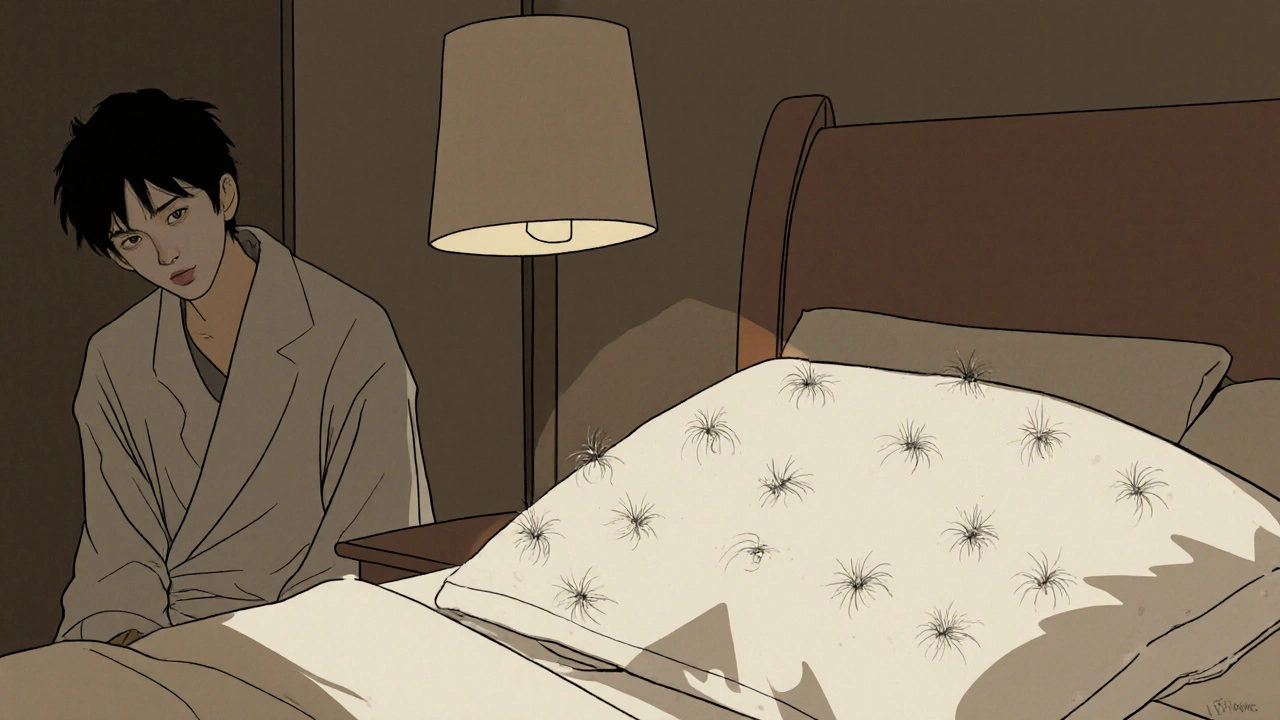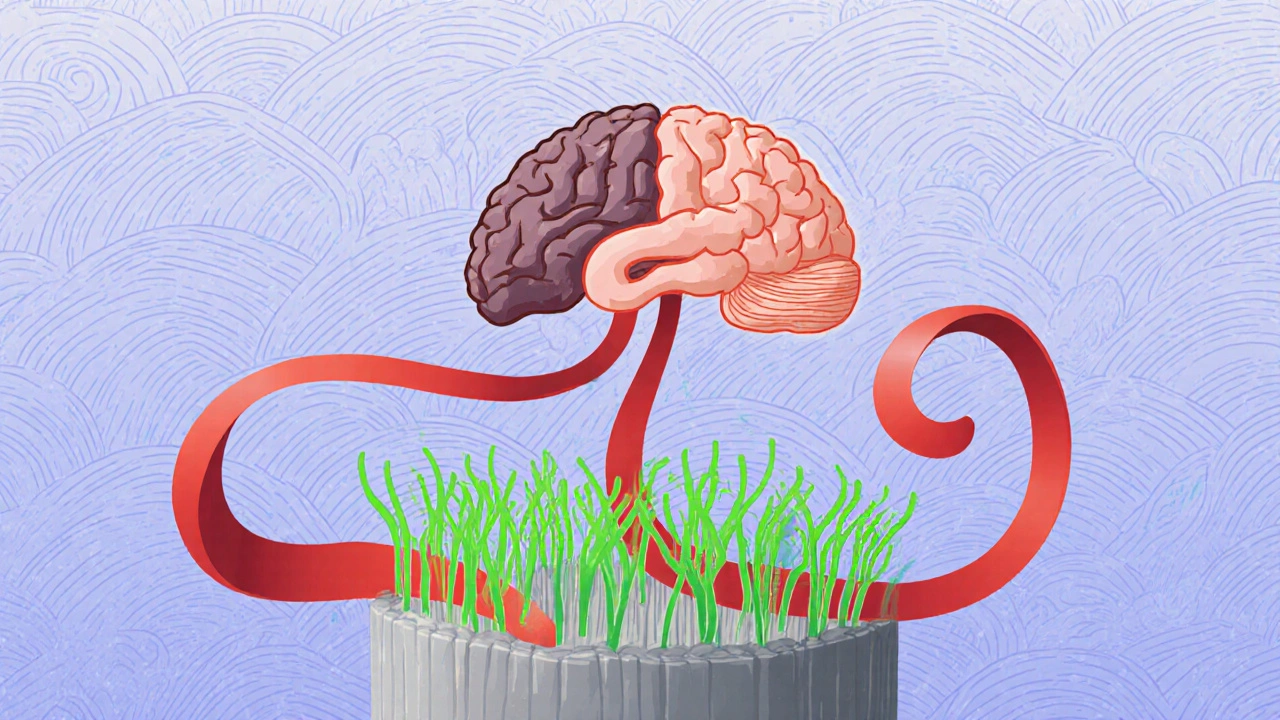
When you suddenly notice more strands on your pillow, you might blame the shampoo or a harsh scalp treatment. But for many people, the real culprit is something you can’t see - stress alopecia. In this article we unpack why anxiety and chronic stress can mess with the hair growth cycle, which types of alopecia are most stress‑sensitive, and what you can do right now to protect your strands.
What is Alopecia?
Alopecia is a medical term for hair loss that can affect the scalp, eyebrows, eyelashes, or any body hair. It isn’t a single disease; instead, it’s a collection of conditions that share the same symptom - thinning or complete loss of hair. Some forms are genetic, others are autoimmune, and a few are directly linked to emotional or physical stress.
Understanding Stress and Its Hormonal Messengers
Stress activates the hypothalamic‑pituitary‑adrenal (HPA) axis, prompting the adrenal glands to release Cortisol. Cortisol is useful in short bursts - it mobilizes energy, sharpens focus, and helps the body cope with danger. When the surge repeats day after day, cortisol stays elevated, leading to inflammation, immune dysregulation, and, crucially for the hair follicle, disruption of the normal growth cycle.
The Hair Follicle Cycle: Why It Matters
Hair follicles move through three phases: anagen (growth), catagen (transition), and telogen (rest). Under normal conditions, about 85‑90% of follicles are in the anagen phase, producing visible hair. Stress‑induced cortisol can push a larger share of follicles into telogen, causing a sudden shedding event a few months later. This shift is the hallmark of Telogen Effluvium, the most common stress‑related alopecia.
Stress‑Sensitive Types of Alopecia
Not every hair‑loss condition reacts to stress in the same way. Below is a quick glance at the three most affected forms:
| Condition | Primary Trigger | Hair‑Loss Pattern | Typical Onset After Stress | Reversibility |
|---|---|---|---|---|
| Telogen Effluvium | Acute physical or emotional stress | Diffuse thinning across scalp | 2‑4 months | Usually regrows within 6‑12 months |
| Alopecia Areata | Autoimmune flare often worsened by chronic stress | Patchy, round bald spots | Variable, can be months to years | Partial regrowth; may become chronic |
| Androgenetic Alopecia (stress‑exacerbated) | Genetic predisposition; stress accelerates miniaturization | Gradual recession of hairline, thinning crown | Years of sustained stress | Progressive; medical treatment needed |

How Chronic Stress Turns Into Hair Loss
- Hormonal surge: Persistent cortisol elevates circulating androgen levels, which can shrink hair follicles.
- Immune misfire: Stress skews the immune system toward a pro‑inflammatory state, increasing the risk of autoimmune alopecia.
- Nutrient drainage: High cortisol drives glucose and protein catabolism, stealing building blocks needed for keratin production.
- Sleep disruption: Poor sleep reduces growth‑factor release (like IGF‑1) that normally fuels the anagen phase.
These mechanisms often overlap, meaning a single stressful episode can set off several pathways at once.
Everyday Triggers That Might Be Sabotaging Your Hair
It’s easy to dismiss everyday pressures as “just part of life,” but research shows even moderate daily stressors add up. Common triggers include:
- Deadlines at work or school that stretch into evenings.
- Financial worries that keep your mind racing at night.
- Relationship conflicts, especially those that feel unresolved.
- Chronic lack of sleep - fewer than six hours per night.
- High‑caffeine consumption that spikes cortisol.
If you spot two or three of these in your routine, you might be primed for a stress‑related shedding episode.
Practical Steps to Reduce Stress‑Induced Hair Loss
Below is a checklist you can start using today. Each point targets a specific pathway we discussed earlier.
- Mind‑body practices: Include 10 minutes of deep‑breathing or meditation twice daily. Studies show these techniques lower cortisol by up to 30%.
- Regular exercise: Aim for 150 minutes of moderate cardio per week. Exercise releases endorphins and improves blood flow to the scalp.
- Balanced diet: Prioritize protein (lean meats, legumes), iron‑rich foods, and omega‑3 fatty acids. These nutrients support keratin synthesis.
- Sleep hygiene: Keep a consistent bedtime, limit screens before sleep, and create a dark, cool bedroom environment.
- Limit stimulants: Cut back on caffeine and alcohol, especially in the afternoon.
- Professional help: Cognitive‑behavioral therapy (CBT) is especially effective for chronic anxiety that fuels hair loss.
Combining these habits reduces cortisol spikes, steadies the immune response, and gives follicles a chance to stay in the growth phase.

When to See a Dermatologist or Trichologist
If you notice hair loss that:
- Persists beyond six months despite stress‑management efforts,
- Appears in distinct patches rather than diffuse thinning,
- Is accompanied by scalp itching, redness, or pain,
- Follows a medication change or hormonal event (pregnancy, menopause),
then a professional evaluation is warranted. Doctors can run a simple pull test, blood work for thyroid or iron levels, and possibly a scalp biopsy to rule out other conditions.
Bottom‑Line Checklist
- Identify your top three daily stressors.
- Start a 5‑minute mindfulness routine tomorrow morning.
- Swap one caffeine drink for herbal tea each day.
- Schedule a check‑up if shedding doesn’t improve in 4-6 months.
Following this plan tackles the problem at its source - the stress that triggers hormonal and immune changes - and gives your hair the best shot at staying put.
Frequently Asked Questions
Can occasional stress cause permanent hair loss?
Short, intense stress usually leads to Telogen Effluvium, which is reversible. Permanent loss is rare unless the stress triggers an autoimmune reaction like alopecia areata.
Is there a lab test that proves stress‑related alopecia?
There’s no direct test for stress, but doctors often check cortisol levels, thyroid function, and iron stores to rule out other causes. A detailed stress‑history questionnaire helps link the dots.
Do supplements help prevent hair loss from stress?
Biotin, zinc, and vitamin D support healthy hair, but they won’t fix cortisol‑driven shedding on their own. Combine supplements with stress‑reduction strategies for best results.
How long does it take for hair to grow back after a stress episode?
For Telogen Effluvium, regrowth typically starts 3‑6 months after the stressor is removed and can be complete by 12 months.
Can therapy alone stop my hair from falling out?
Therapy reduces the psychological trigger, which can lower cortisol. Many people see improvement when therapy is paired with lifestyle changes, but severe cases may still need medical treatment.

10 Comments
Hey, try a quick 5‑minute breathing break each morning – it can really chill your cortisol.
Wow, you’ve basically written the ultimate battle plan for stressed strands!
Every time I feel the anxiety creep in I picture my follicles marching into a calm sanctuary.
It’s wild how cortisol can hijack the whole growth cycle like a rogue commander.
So keep that meditation habit tight and watch the shedding retreat.
Remember, you’re fighting the invisible enemy with visible results.
Ever notice how the “big pharma” narrative conveniently ignores the stress‑induced hair loss epidemic? They tell you it’s just “genetics” while pumping steroids onto the market. The whole HPA‑axis thing is just a cover‑up for a larger mind‑control agenda. Your cortisol spikes are not random; they’re engineered by hidden micro‑chips in everyday products. Don’t trust the glossy dermatology ads – they’re part of the same machine that keeps us meek. Stay vigilant, question the sources, and keep a journal of every stress trigger. Only then can you truly reclaim your hair and your autonomy.
Stress hair loss is a myth they push to sell more supplements.
When the mind erupts like a volcano, the hair follicles tremble in terror.
Cortisol, that relentless tyrant, storms the scalp and forces the brave anagen warriors into the bleak telogen exile.
Each shedding strand becomes a fallen soldier, a silent testimony to the inner chaos.
Yet the story does not end in despair; it is a saga of resilience forged in the fires of anxiety.
The first act reveals the HPA‑axis, a hidden puppet master pulling the strings of hormones.
The second act introduces the immune system, a fickle ally that can turn against its own hair.
The third act shows the nutrient highways, clogged by the relentless demand of stress.
When you finally steal a moment to breathe, you deny the tyrant a foothold.
Meditation, like a gentle rain, washes away lingering cortisol droplets.
Exercise, the heroic sprint, pumps fresh blood to the scalp’s battlefield.
A balanced diet supplies the armor of keratin, iron, and omega‑3s.
Sleep, the night watch, restores the growth chambers before dawn.
All these practices combine into a legion that can push back the invading stress.
Do not underestimate the power of a simple five‑minute ritual.
Even the smallest habit can rewrite the script of your hair’s destiny.
In the end, the follicle’s fate lies not in the hands of fate, but in the choices you make each waking hour.
Dear readers, implementing a structured mindfulness routine can significantly attenuate cortisol production.
In addition, adhering to a balanced macro‑nutrient plan ensures the keratin synthesis pathway remains optimal.
Regular aerobic activity further enhances peripheral circulation, delivering essential substrates to the hair follicle.
I encourage you to integrate these evidence‑based interventions promptly for maximal benefit.
I’ll keep that five‑minute ritual in mind.
Sounds like a load of nonsense, just eat more meat.
Yo, you think meat solves cortisol? Nah, you’re feeding the stress monster.
Exactly! 🧠 Stress is a beast, but we can tame it with consistent habits. Keep pushing forward!